Matthew Sampson takes a listen to the Hifiman HE-400S planar headphones costing $300 (£239).
Being objective is difficult, especially when you go in with a strong bias. I wanted to be right, more than anything else, because I wanted to feel good about a personal purchase. When I got the Hifiman HE-400S, I already had experience with planar headphones, in the form of my Fostex TH500RP. They were bigger, they were sturdily built, they were luxuriously appointed, and, perhaps most importantly, they were a full USD 100 more expensive. So naturally, I didn’t want to get sudden work-related buyer’s remorse. Luckily I didn’t, but I also wished that I’d bought the Hifiman cans.
The Science:
A quick background, for those new to head-fi, on what exactly planar magnetic, aka orthodynamic headphones are. Sure, you could say that electrical current goes in, audiophile space wizardry happens, and music comes out, but that doesn’t cut the mustard. The long and short (Read: Intelligible) version of it is that you have a membrane that’s interwoven with an electrically conducting grid suspended between two oppositely polarized magnets. When electricity is applied, the plane of mesh and membrane vibrates within the field of the magnets, creating sound waves. Because of this very large voice element, planar headphones tend to be large, heavy, and very good at reproducing bass frequencies. But before you think that I had to evaluate a pair of magical portable subwoofers, don’t worry, they can reproduce the rest of the frequency range pretty well too.
Build Quality
Back on track, planar headphones are, as mentioned, usually quite large, and the HE400S’ are no different, They come in a big deep box, and include the headphones, a cable and a ⅛” to ¼” adapter. Yes, the stock cable terminates in a 3.5mm jack. And there’s a reason for that. The construction of the headphone body is mostly polymer, apart from the backing grilles, and structural headband. This makes the HE-400s unusually lightweight, especially considering the reputation that planar headphones have. For adjustment of height, you have a pleather headband under the structural headband that moves up and down on either side independently, in case you’re like me, and have a weirdly tall cranium. The earcups are made of a velour material, and are quite comfortable, if you don’t mind the fuzz.
The reason for the default cable being 3.5mm is actually one of the HE400S’ biggest strong suits. They have a shockingly low impedance, especially for planar headphones, and can easily be driven by most mobiles or DAPs, without the aid of an external amp. However, Samsung mobile phones and integrated sound cards on desktop computers seem to have anemic amps, but most of you wouldn’t use those anyway. Even inexpensive amp/DAC combos like the FiiO E07K can adequately power these, with perhaps some adjustment to the gain settings.
This low impedance hurdle makes them very good on-the-go headphones in the ease of use department, and their light weight means that they’re comfortable to wear and carry. The trouble of course still remains that they’re planar headphones, which means that due to their open back, they leak like a sieve. These aren’t headphones that you’ll walk around with, or even listen on in a public place, but they do make fantastic travel headphones for a bit of relaxation in a hotel room, and they’re also a great pair for anyone who wants to get into planar headphones without having to shell out another USD 600 for an amp just to drive them efficiently. Of course, when using them with a Hifi system or desktop amp, the included 6.35mm adaptor allows you to really let these things sing. Just because it doesn’t need an amp doesn’t mean that an amp hurts. The cable itself is removable, terminating in two 2.5mm TRS plugs that are labeled for their proper ear, so you can swap in your own premium cable, if you feel like having a native 6.35mm plug, or if you want some outrageously pure wiring material that’s been thrice-deoxygenated and made of pure gold harvested from an asteroid in Venus’ orbit.
Listening
Planar headphones, as mentioned before, have a bit of a reputation of being deep and dark in tone, reproducing the lowest of bass frequencies. These particular ones have a lower-end frequency response limit of 20 hz, but that’s about where human hearing cuts off on the lower end. This isn’t especially low by any standard, but the bass response on these is snappy and pleasingly low in distortion. The upper limit is 35 khz, well above the circa 22khz upper limit of the hearing range of any human, but that’s done with the idea in mind that the higher the limit, the less likely the user is to experience distortion in the audible 20-22k range. It was at this point where my buyer’s remorse began to set in. My Fostex headphones sound spectacular to me, and they’re not bad headphones at all. But the HE-400S’ were, dare I say, better in many regards. I put my music library on shuffle in Foobar2000, and just cycled through all these tracks that I knew so well. Some tracks sounded basically the same, but others? My jaw physically dropped. The two areas where the HE400S’ shine bright are songs with lots of reverb (So, all that 80s pop that I love) and songs that were recorded in a live environment. (classical, live albums, and anything recorded before the mid 70s, basically) Other types of recordings sound fine, great even, but if all you listen to is hardstyle EDM and Meshuggah, you might not notice the subtleties of these cans. (Which also doesn’t solve the issue of you listening to Meshuggah, but that’s for another time.) If you hate hearing the room in Cream’s “Sunshine of your Love,” this tells me two things. Firstly, you shouldn’t be listening to Cream, because all their songs sound like that. Secondly, the HE400’s aren’t for you. But if you like feeling like you’re actually there at a symphonic concert, or if you love placing the instruments in Charles Mingus’ “Haitian Fight Song” or even if you just want to feel like you’re there at Clapton’s 1991 Royal Albert Hall concerts, as captured on the “24 Nights” CD, then I think you should strongly consider the HE-400S headphones.
I switched off shuffle, and loaded my play queue with every live, orchestral, and live-room recorded song. I deliberately sought out the most difficult songs to play, and looked for stuff that sounded average to mediocre on any other system. So I played Phil Collins’ live cut of “In the Air Tonight” from “Serious Hits…Live!” which has always sounded very washed out. It wasn’t magically crystal-clear, but I could actually hear bass now, and the treble was significantly more perceptible. The frequencies seem to be tuned exactly to the right point to make reverb more audible, be it artificial or a natural result of live recording. If you look at the frequency response chart, there’s a slight peak from 8000 to 10,000 Hz, which is where you’ll find frequencies that add the clear, airy sound that I heard with the recordings.
This greatly increased the immersiveness of any live recording, and also led me to find another use: Film viewing and computer gaming. Because of the high levels of environmental sound, particularly on movies famous for having a good surround or stereo mix, the HE-400s became my optimal choice for viewing “Star Wars” for the umpteenth time or for watching well-mixed films like the 2011 actioneer “Inception.” If you’ve seen the latter, there’s a particular scene where a man is hit by a car, and his head impacts the windshield, which we hear from the inside of the vehicle. I’ll admit, I winced in sympathy. As for gaming, the fantastically Foleyed “Battlefield 1” had me flinching with every bullet that passed my head, and the deep bass response of the planar headphones gave a visceral depth to explosions. Caveat: When viewing films, surround mixdown sounds cool the first few times, but your results will generally be better if you use the stereo mix (if available.) Games often offer a headphone option, so there’s no issue there.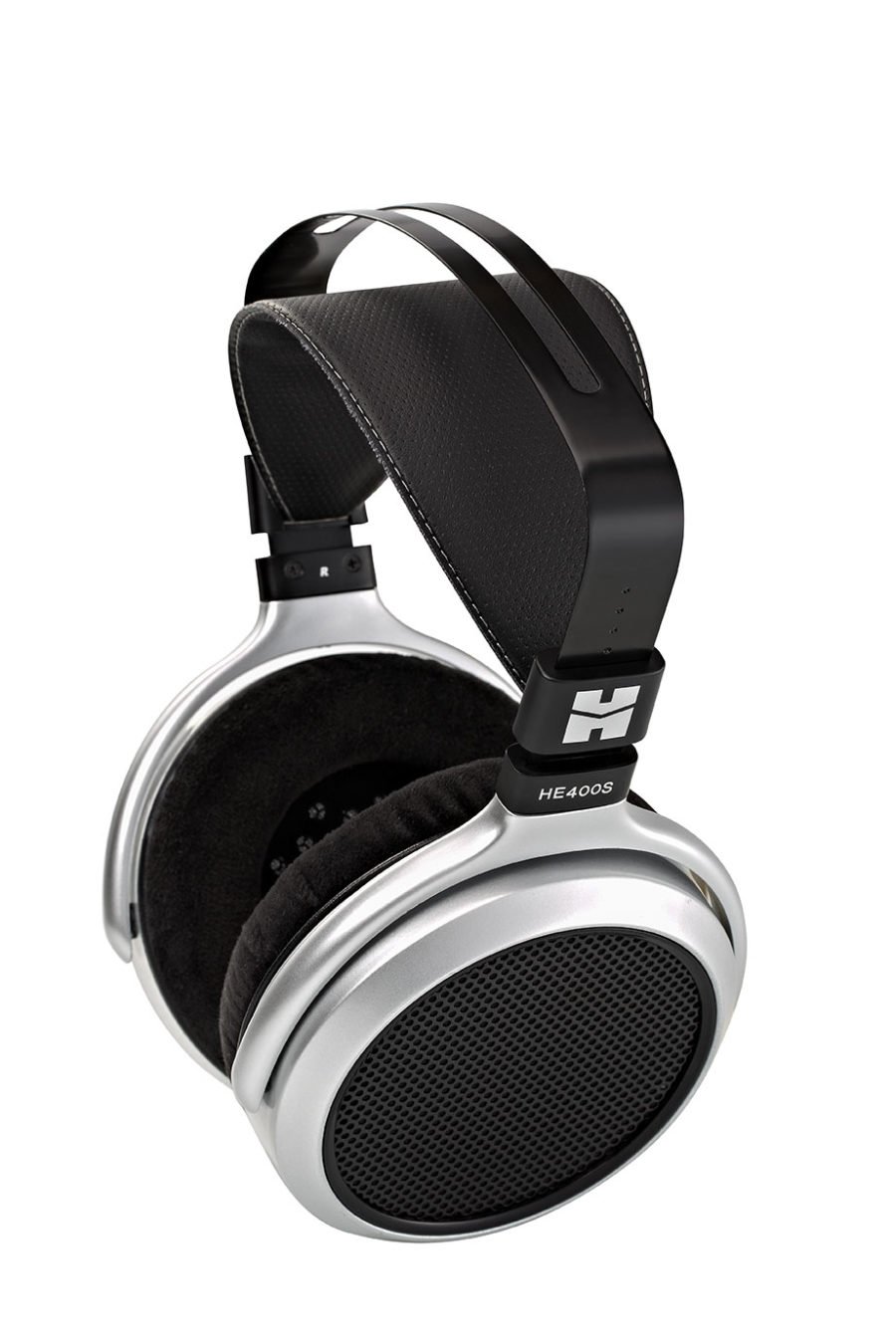
The Bottom Line
I want them.
I could have left my entire review at that line. That’s how good these are, despite being USD 100 less and having a largely polymer construction, vice the metal of the Fostexes, as well as lacking the creature comfort of the leather earcups. Are they the best planar headphones ever? I can’t say. Ask me again when I’ve listened to all the planar headphones out there. What I can say is that they’re a joy to listen to for many different applications, comfortable to wear, and have the added flexibility of a removable 3.5mm plug and low impedance.
Build Quality: Good. A largely polymer speaker housing and metal headband provide a sturdy, light feel. They’re not tanks, but they don’t feel like they’ll fall apart in your hands.
Sound Quality: Very good, astounding on some songs. Incredibly fun for live, orchestral, and older recordings (dust off your jazz albums!) and they handle 80s music quite well. Pleasing high end, especially considering that they’re planar.
Value For Money: Excellent. For USD 300 (£239 UK), you’re getting a very good package, and they make a wonderful addition to anyone’s collection, or even first foray into planar headphones.
Comfort: Light weight and soft earcups mean that these are ready for extended wear out of the box, though the velour-esque earcup material can become uncomfortable if you’re sweating a lot.
Pros:
Great for live recordings, classical music, and older small-group recordings. Reverb-heavy records sing as well.
Lightweight and comfortable.
Removable cable for easy swapping.
Very low impedance, easy to drive.
Cons:
Frequency response isn’t as wide as some would like.
Highs aren’t particularly bright. They’re present, clear, and not muffled by any stretch, but if that’s all you crave in your headphones, these aren’t for you.
The included cable isn’t very long, so if you want to plug them into a hifi setup that’s across the room, you’ll need a new cable.
Price:
Approximately $300/£239
Equipment Used:
Foobar 2000 Running on Windows 10 (3.5Ghz i5 quad core processor, 32GB DDR3 1600 RAM)
Samsung Galaxy S4
Apple iPhone 7 Plus
FiiO E07K MkII
Peachtree Nova 150 2.0
Peachtree Nova 300 2.0
Matthew Sampson
Technical Stats:
Frequency Response : 20Hz – 35KHz
Sensitivity : 98dB
Impedance : 22 Ohms
Weight : 350g
Cable Length : 1.5 m
Plug : 3.5mm/6.35mm













































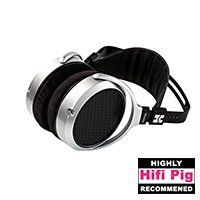
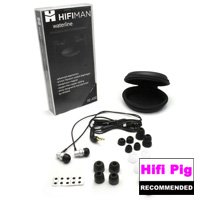

























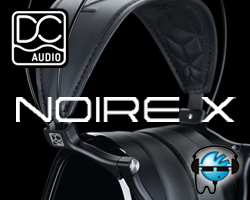
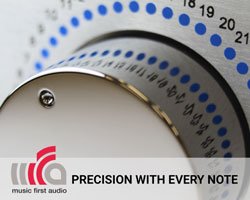








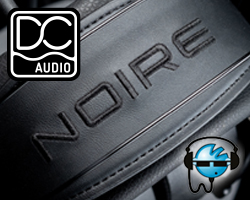

























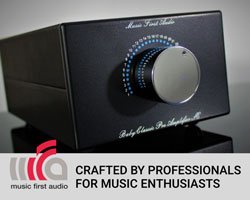






























































You must be logged in to leave a reply.